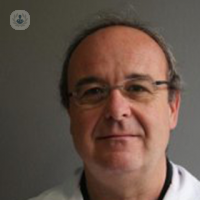Ictus, third cause of death in the West
Written by:Cerebrovascular disease, more commonly known as stroke, is the result of temporary or permanent dysfunction of part of the brain. This occurs due to occlusion of a cerebral blood vessel (thrombosis or embolism) or to their breakage (cerebral hemorrhage or hematoma).
 Although the causes of stroke are very diverse, in most cases the main cause is atherosclerosis, both located in the extracranial arteries and intracranial. Specialists in Neurology claim that this causes occlusion or thrombosis (ischemic stroke).
Although the causes of stroke are very diverse, in most cases the main cause is atherosclerosis, both located in the extracranial arteries and intracranial. Specialists in Neurology claim that this causes occlusion or thrombosis (ischemic stroke).
Symptoms of stroke
Symptoms are diverse and depend on the brain area that has been compromised by dysfunction of the blood supply. Stroke can occur in such diverse ways: a paralysis of a limb or half of the body, altered sensation, imbalance or even an isolated speech disturbance.
One aspect should be recognized as an alarm signal is abrupt or rapid onset of symptoms. Recognition of signs of suspected stroke is very important as it allows prompt medical assistance that helps implement the relevant treatments to lessen the severity of the disease and reduce the potential consequences.
Stroke Treatment
Advances in the treatment of stroke during its initial phase, particularly during the first three or four hours are possible to reduce mortality and its aftermath. However, the aging population and increased survival make the social cost of stroke is increasing.
Stroke is the third leading cause of death in the Western world and the leading cause of physical disability in adults in our midst. On the other hand, it is also the second leading cause of dementia after Alzheimer's disease and the most frequent cause of epilepsy onset age.
For all these reasons, it is important to highlight the role of primary prevention of stroke, ie, all measures that can prevent its occurrence. It is essential to act on vascular risk factors through healthy lifestyles (exercise, nutrition, etc.) and the detection and treatment of hypertension, diabetes or disorders of lipid metabolism.
Edited: PINE NOELIA GARCÍA



